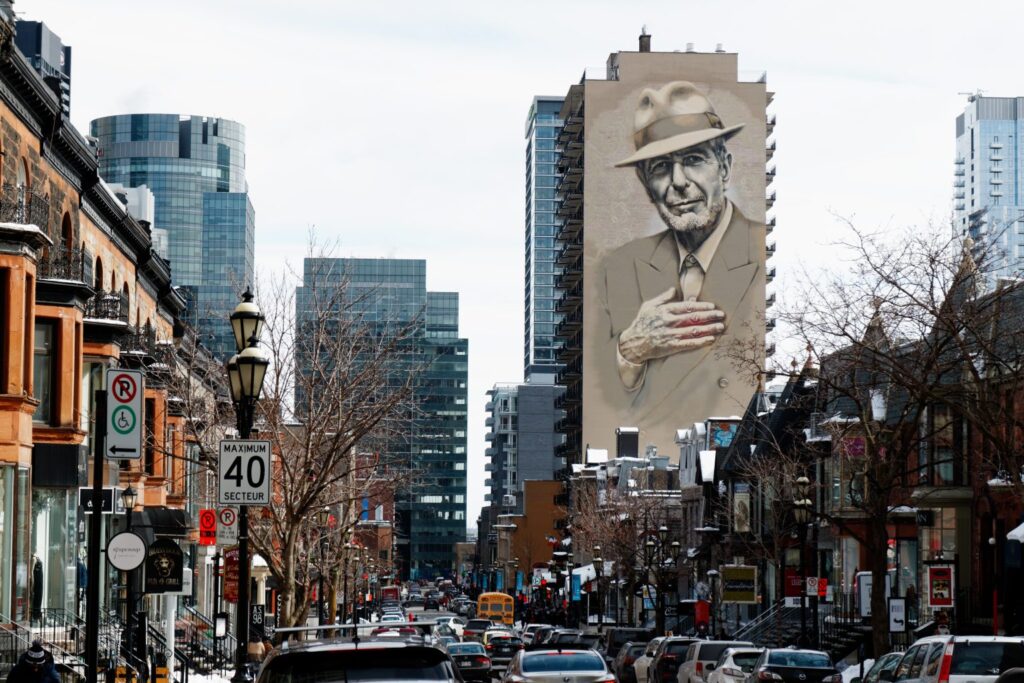This program targets those foreign nationals who have experience in cultural and athletic activities. This experience can relate to their self-employment or participation in those fields on a world class level. Qualified foreign nationals can also show their ability and intention to be self-employed in Canada. This is done by a well-thought business plan detailing the proposed Canadian business. This program is a direct pathway to Canadian permanent residency and, unlike Entrepreneur PNPs, this program does not require the applicant to first obtain a work-permit nor it requires the applicant to sign a business performance agreement. Nonetheless the applicant can get a C-11 Work Permit to come to Canada earlier and start the work while their PR application is in process. Language proficiency is not a requirement but extra points will be considered for having an official language score.
Table of Contents
ToggleFederal Self-Employed Program at a glance
| Legal Ground | Section 88(1) of IRPR |
| Eligibility | – Obtain at least 35 points in the program’s point system; – Have at least two years of relevant experience as follows: 2 one-year periods being self-employed in cultural activities or athletics, OR 2 one-year periods participating at a world-class level in cultural activities or athletics, OR Combination of the above totaling at least two years |
| Requirements | – Proving the intention and ability to be self-employed in Canada through a well-thought business plan; |
| Performance Obligations | None |
| Financial/Investment Requirement | – No prescribed minimum amount (But a person’s financial assets is a measure of intent and ability to be established economically in Canada, and specific amount depends on the nature of the business); – Applicants must have sufficient funds to create an employment opportunity for themselves and maintain themselves and their family members (in general no less than $50,000); |
| Required Supporting Documents | – Proof of having been self-employed in country of residence (company, contracts, etc.); – Proof of sufficient funds to operate the business in accordance with the business plan; – Applicant’s personal documents (i.e. resume, education, financial ability and etc.); – Proof of relevant experience in cultural and/or athletic fields; |
| Processing Time | 34 months (likely to be reduced post-COVID19) |
| Permanent Residency Prospect | Direct |
Point Grid for Federal Self-Employed Program
To qualify for this program, the applicant needs to get a minimum of 35 points out of 100. Points are given as follows:
| EDUCATION | MAX 25 |
| Master’s Degree or PhD & at least 17 years of full-time study. | 25 |
| Two or more university degrees at the bachelor’s level & 15 years of full-time study OR three-year diploma, trade certificate or apprenticeship & 15 years of full-time study. | 22 |
| University degree of 2 years or more at the bachelor level & 14 years of full-time study OR two-year diploma, trade certificate or apprenticeship & 14 years of full-time study. | 20 |
| One-year university degree at the bachelor level & 13 years of full-time study OR one-year diploma, trade certificate or apprenticeship & 13 years of full-time study. | 15 |
| one-year diploma, trade certificate or apprenticeship & 12 years of full-time study. | 12 |
| High School Diploma | 5 |
| EXPERIENCE (in cultural and athletics activities) | MAX 35 |
| Two years | 20 |
| Three years | 25 |
| Four years | 30 |
| Five years | 35 |
| AGE | MAX 10 |
| Age < 16 or Age > 54 | 0 |
| 17 or 53 | 2 |
| 18 or 52 | 4 |
| 19 or 51 | 6 |
| 20 or 50 | 8 |
| 21-40 | 10 |
| LANGUAGE ABILITY | MAX 24 |
| ADAPTABILITY | MAX 6 |
| Spouse or common-law partner’s education | 3-5 |
| One year of full-time Canadian work experience (applicant or spouse or common-law partner) | 5 |
| Two years of full-time study at a Canadian post-secondayr institution | 5 |
| Relatives in Canada who is a PR or citizen (parent, grandparent, child, grandchild, child of parent, sibling, child of grandparent, aunt or uncle, niece or nephew) | 5 |
What are athletics occupations?
Some examples are:
Athletes: they participate in competitive sports events on an amateur or professional basis. They play team sports or compete in individual sports; or in games such as poker or chess.
Coaches: they prepare and train individual athletes or teams for competitive events. They are employed by national and provincial sports organizations, professional and amateur sports teams, sports clubs and universities or they may be self-employed. They can also be sports scouts who identify and recruit athletes for professional sports teams.
Sports Officials and Referees: they observe and enforce rules and regulations governing sporting events, athletic games and sports competitions. They are employed by national, provincial and local sporting commissions, organizations and leagues.
Program Leaders and instructors in recreation, sport and fitness: they lead and instruct groups and individuals in recreational, sports, fitness or athletic programs. They are employed by community centres, sports and fitness clubs, outdoor centres, resorts, recreational facilities, health care facilities, retirement homes, correctional institutions, government departments, private businesses, tourism associations and similar establishments.What are cultural occupations?
Some examples are:
Librarians: they select, develop, organize and maintain library collections and provide advisory services for users. They are employed in libraries or other establishments with library services throughout the public and private sectors;
Library and public archive technicians: they assist users in accessing library or archive resources, assist in describing new acquisitions, participate in archive processing and storage, and conduct reference searches. They are employed by libraries and public archives;
Conservators and Curators: they restore and conserve artifacts belonging to museums, galleries and owners of cultural property. Curators recommend the acquisition of museum artifacts and gallery works of art and research their artistic history. They are employed in museums, art galleries and universities. Conservators may be self-employed;
Technical occupations related to museums and art galleries: they classify and catalogue museum artifacts and gallery works of art, construct and install exhibits and displays, restore, maintain and store museum and gallery collections, frame artwork, and perform other functions in support of curatorial and conservation activities. They are employed in museums and galleries. Picture framers and taxidermists may also be employed in retail settings or may be self-employed. They can also be tour guides. They are employed by art galleries, museums, parks, aquariums, zoos, interpretive centres, botanical gardens, cultural centres, nature sanctuaries, historic and heritage sites, and other locations;
Archivists: they manage, process, store and disseminate information contained in an organization’s archives. They acquire, store and research textual material, pictures, maps, architectural documents, electronic materials, films and videos, and sound recordings and multimedia materials. They are employed in archives, in the public and para-public sectors and in private sector organizations;
Authors and Writers: they plan, research and write books, scripts, storyboards, plays, essays, speeches, manuals, specifications and other non-journalistic articles for publication or presentation. They are employed by advertising agencies, governments, large corporations, private consulting firms, publishing firms, multimedia/new-media companies and other establishments, or they may be self-employed;
Editors: they review, evaluate and edit manuscripts, articles, news reports and other material for publication, broadcast or interactive media and co-ordinate the activities of writers, journalists and other staff. They are employed by publishing firms, magazines, journals, newspapers, radio and television networks and stations, and by companies and government departments that produce publications such as newsletters, handbooks, manuals and Web sites. Editors may also work on a freelance basis;
Journalists: they research, investigate, interpret and communicate news and public affairs through newspapers, television, radio and other media. They are employed by radio and television networks and stations, newspapers and magazines. Journalists may also work on a freelance basis;
Translators, terminologists and interpreters: translators translate written material from one language to another. Interpreters translate oral communication from one language to another during speeches, meetings, conferences, debates and conversation, or in court or before administrative tribunals. Terminologists conduct research to itemize terms connected with a certain field, define them and find equivalents in another language. Sign language interpreters use sign language to translate spoken language and vice versa during meetings, conversations, television programs or in other instances. Translators, terminologists and interpreters are employed by government, private translation and interpretation agencies, in-house translation services, large private corporations, international organizations and the media, or they may be self-employed. Sign language interpreters work in schools and courts, and for social service agencies, interpretation services, government services and television stations, or they may be self-employed;
Producers, directors, choreographers and related occupations: they oversee and control the technical and artistic aspects of film, television, video game, radio, dance and theatre productions. They are employed by film production companies, radio and television stations, video game companies, broadcast departments, advertising companies, sound recording studios, record production companies and dance companies. They may also be self-employed;
Photographers: they operate still cameras to photograph people, events, scenes, materials, products and other subjects. They are employed by photographic studios, newspapers, magazines, museums and government, or they may be self-employed;
Film and video camera operators: they operate motion picture and video cameras and related equipment to record news, live events, films, videos and television broadcasts. They are employed by television networks and stations, motion picture and video production companies and in-house communications facilities of large corporations;
Graphic arts technicians: they assist in conceptualizing a project, interpreting design specifications or sketches, preparing the page make-up, lay-out and lettering, and preparing production materials for press, electronic or multimedia publishing. They are employed by publishing, communications, advertising, marketing, printing and multimedia establishments, and by television and film production companies. They may also be self-employed;
Broadcast technicians: they install, set up, test, operate and repair electronic equipment used to record and transmit live and taped radio and television programs and to produce audio and video streaming broadcasts for the Internet. They are employed by radio and television broadcasting networks and stations, by broadcast equipment companies and by Internet-based communication providers;
Announcers and Broadcasters: they read news, sports, weather, commercial and public service messages and host entertainment and information programs for broadcast on radio or television. They are primarily employed by radio and television stations and networks and by commercial firms that produce advertisements for radio or television;
Performers: they can be circus performers, magicians, models, puppeteers and other performers. They are employed by circuses, nightclubs, and theatre, advertising and other production companies, or they may be self-employed;
Graphic designers: they conceptualize and produce graphic art and visual materials to effectively communicate information for publications, advertising, films, packaging, posters, signs and interactive media such as Web sites and CDs. They are employed by advertising and graphic design firms, by establishments with advertising or communications departments and by multimedia production companies, or they may be self-employed. They can also be supervisors, project managers or consultants of their fields;
Illustrators: they conceptualize and create illustrations to represent information through images;
Interior designers and interior decorators: they conceptualize and produce aesthetic, functional and safe designs for interior spaces in residential, commercial, cultural, institutional and industrial buildings. They are employed by architectural and interior design firms, retail establishments, construction companies, hospitals, airlines, hotel and restaurant chains, and other establishments, or they may be self-employed;
Theatre, fashion, exhibit and other creative designers: they conceptualize and produce designs for film, television, theatre and video productions, garments and textiles, displays and exhibits, and for other creative items such as jewellery and trophies. Theatre designers are employed by performing arts and broadcasting companies and by festivals; fashion designers are employed by clothing and textile companies or may be self-employed; and exhibit designers are employed by museums and retail establishments;
Artisans and Craftspersons: they use manual and artistic skills to design and make ornamental objects, pottery, stained glass, jewelry, rugs, blankets, other handicrafts and artistic floral arrangements. Makers of musical instruments are also included in this unit group. Most craftspersons are self-employed. Artistic floral arrangers are usually employed in florist shops and floral departments of retail establishments, or may be self-employed. They can also be Craft instructors;
Patternmakers: they create master patterns for the production of garments, footwear and other textile, leather or fur products. They are employed by pattern manufacturers, textile, leather or fur products manufacturers, or they may be self-employed;
Audio and video recording technicians: they operate equipment to record, mix and edit sound, music and videotape, for motion pictures, television and radio programs, videos, recordings and live events. They are employed by multimedia companies, film, video and concert production companies, sound recording firms, theatre and dance companies, educational establishments, clubs, hotels, bands, radio stations, television networks and video production and editing companies;
Conductors, composers and arrangers: they conduct bands and orchestras, compose musical works and arrange instrumental and vocal compositions. They are employed by symphony and chamber orchestras, bands, choirs, sound recording companies, and orchestras for ballet and opera performances, or they may be self-employed;
Musicians and singers: they perform with orchestras, choirs, opera companies and popular bands in establishments such as concert halls, lounges and theatres and in film, television and recording studios. They can also be music teachers who usually teach in conservatories, academies and private homes;
Dancers: they are employed by ballet and dance companies, television and film productions and nightclubs and similar establishments. They can also be dance teachers who are usually employed by dance academies and dance schools;
Actors and comedians: they perform roles in motion picture, television, theatre and radio productions to entertain a variety of audiences. They are employed by motion picture, television, theatre and other production companies. They can also be acting teachers employed by private acting schools;
Painters, sculptors and other visual artists: they create original paintings, drawings, sculptures, engravings and other artistic works. They are usually self-employed. They can also be art instructors and teachers, who are usually employed by art schools;What is world-class participation?
“World-class participation” language is used in this program to identify persons who are known internationally. It also identifies persons who may not be know internationally but perform at the highest levels in their discipline.
How important is financial ability for this program?
Very important. Because it is a measure of your intent and ability to be established economically in Canada. Although there is no minimum investment level for a self-employed person, he or she must have sufficient funds to create an employment opportunity for themselves and maintain themselves and their family members. Basically you have to show that you have enough financial resources to execute you business plan.
How can I prove that I was self-employed in my country?
You need to provide documents that show you earned a living through your talents. For example your contracts, invoices, account books, articles of association, self-employed pension and etc.
What if I have the required experience but not as a self-employed person?
If you have gained your experience largely as an employee, you may still qualify. As per the federal court decision in Guryeva v. Canada, the fact that artists and writers were considered “employees” was not determinative.
Does my Canadian business have to be in a cultural and/or athletics field?
Your proposed Canadian business have to be exactly in line with your experience in either cultural or athletics fields. You cannot propose a business that does not match your experiences.
Is the success of my proposed business a determining factor?
No, but its viability is a deciding factor. Your proposed business shall be viable meaning it is capable of working out successfully.





